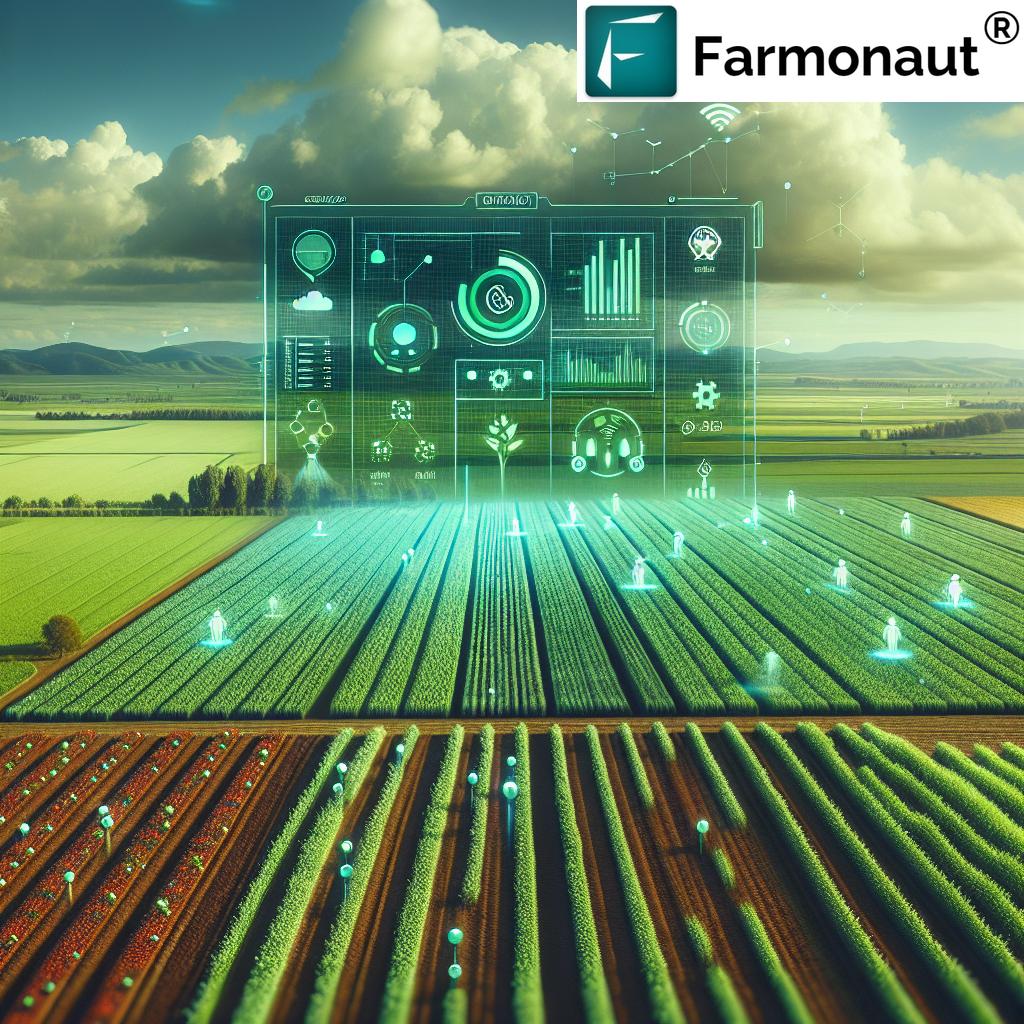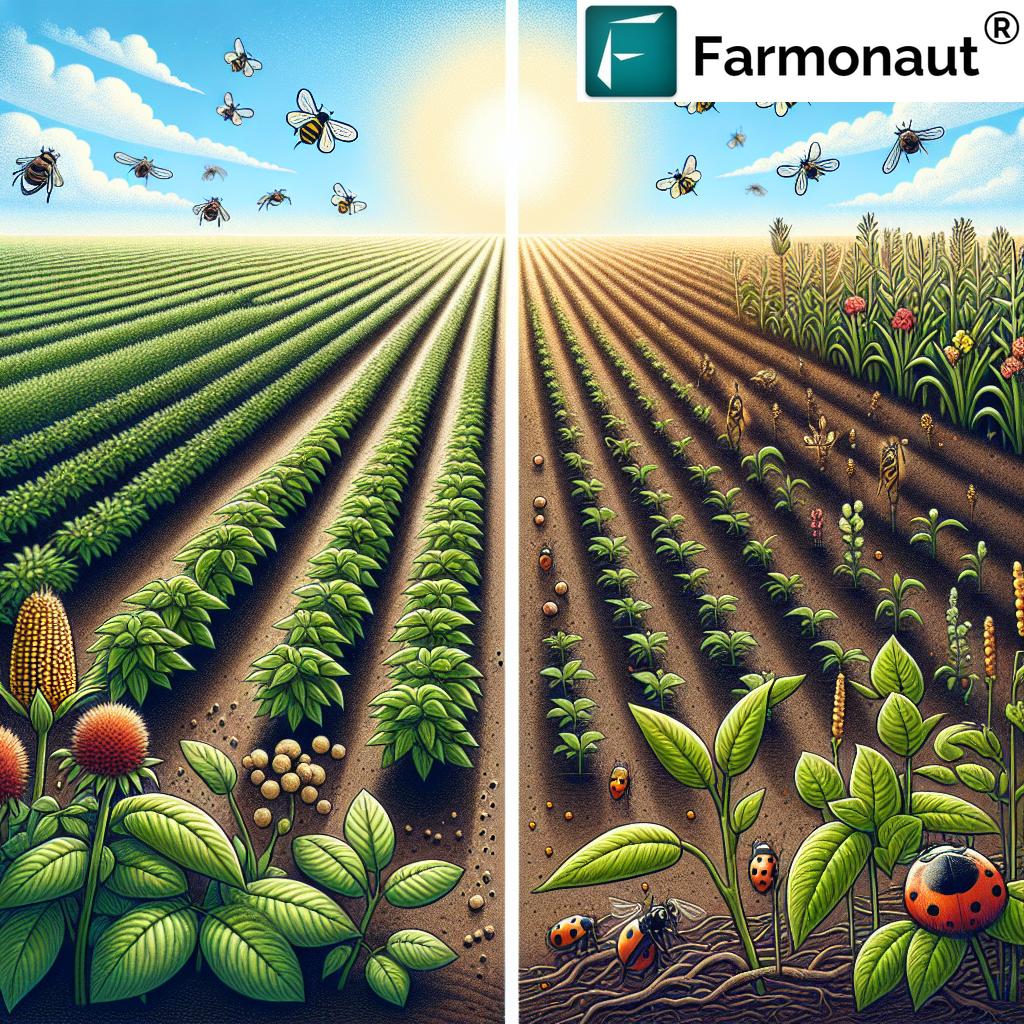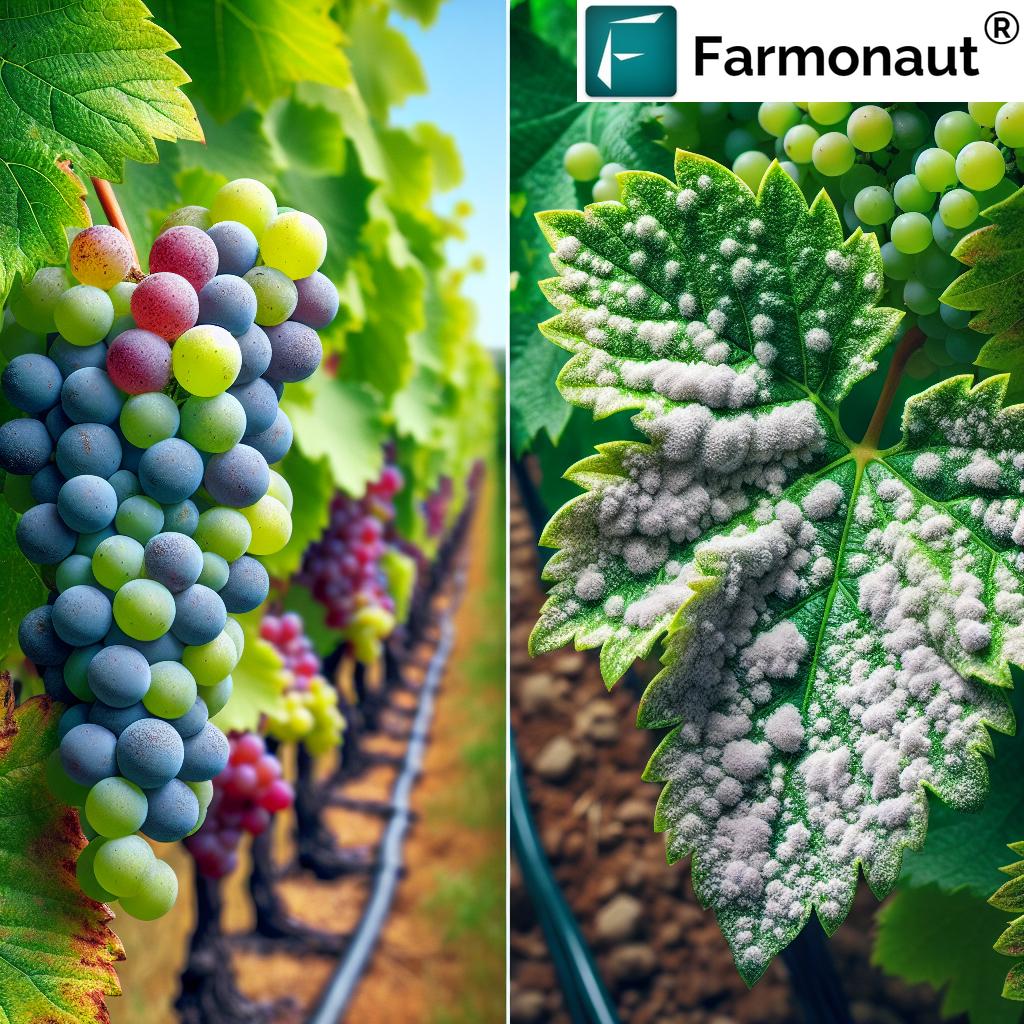AI Disease Prediction & Weather Tools for Crop Detection 2025
“By 2025, AI weather prediction tools can analyze over 15 million agricultural data points daily for precise forecasting.”
Introduction: The Rise of AI in Agriculture
In 2025 and beyond, artificial intelligence (AI) is having an unprecedented impact on agriculture, transforming disease detection, forecasting, and farm management globally. The integration of ai disease prediction, ai for crop disease detection, and ai weather prediction tools for agriculture is ushering in a new era of sustainable practices, resource conservation, and precision yield enhancement. These systems empower farmers with data-driven, targeted solutions, driving smarter farming in this decade of rapid climate evolution and technological innovation.
Traditional methods like manual inspection for identifying plant diseases have long been prone to error and inefficiency, often missing subtle changes until it’s too late. But, thanks to recent advances in AI, computer vision, and learning algorithms, we now utilize deep analysis of real-time images captured via drones, smartphones, and field cameras to detect disease at earlier stages—well before visible symptoms emerge.
This blog explores the significant advancements in ai disease prediction, ai for crop disease detection, and ai weather prediction tools for agriculture, forecasted to revolutionize farming by 2025. We’ll also dive into how platforms such as Farmonaut are offering these cutting-edge technologies to help empower farming communities worldwide.
AI for Crop Disease Detection: Precision at its Peak
AI for crop disease detection stands as one of the most significant advancements in modern agriculture. Early and accurate detection of plant diseases is paramount for farmers looking to improve yields, reduce input costs, and minimize environmental impact by preventing the indiscriminate use of pesticides.
How AI Transforms Disease Detection
Traditional disease identification methods rely on manual inspection—a process prone to error given vast, diverse agricultural lands and subtle early symptoms. In contrast, AI systems analyze large datasets of images captured via drones, smartphones, or field cameras.
Using computer vision and deep learning algorithms, these tools detect even the most subtle signs of disease, such as discoloration, texture changes, or unusual growth patterns, often at the earliest stages.
- Detect signs of disease—from minute discoloration to abnormal growth.
- Automate inspections—scanning crops on a large or small scale with each pass of a drone or satellite overhead.
- Deliver actionable insights—enabling targeted treatments and reducing reliance on broad-spectrum chemical applications.
This level of precision—unprecedented just a few years ago—has become indispensable in 2025, with ai for crop disease detection now routinely integrated into farm management systems worldwide.
Explore Large Scale Farm Management with AI for comprehensive operational oversight, health monitoring, and decision support for maximizing farm productivity.
“AI disease detection models achieve up to 92% accuracy in identifying crop diseases from satellite and aerial imagery.”
Key Benefits of AI-based Crop Disease Detection in 2025
- Early action: Detecting disease ahead of visible symptoms enables farmers to take targeted measures and prevent outbreaks from spreading.
- Minimized inputs: AI-driven detection leads to reduced and more efficient pesticide usage.
- Improved yields: Secure higher crop yields through early intervention and healthier crops.
- Environmental impact: Sustainable practices minimize chemical runoff and protect beneficial ecosystems.
- Scalability: Serve smallholder and large-scale farms alike with remote, affordable services—especially via mobile apps.
Find out more about Crop & Plantation Advisory—tailored, satellite-powered recommendations for sustainable crop planning and forestry management.
Process Overview: AI for Crop Disease Detection
- Data Capture: Drones, satellites, field cameras, and mobile devices collect images of crops.
- Algorithmic Analysis: AI models analyze and process visual and environmental data from multiple sources.
- Anomaly Detection: Subtle signs such as discoloration, texture changes, or growth pattern shifts are flagged for further inspection.
- Decision Support: Alerts and recommendations are sent to farmers through mobile or web applications for timely intervention.
AI-based detection systems are now foundational components of cloud-connected, IoT-enabled agricultural operations—offering expertise far beyond manual human capability.
AI Disease Prediction Models: From Detection to Forecasting
While AI for detection pinpoints issues as they arise, ai disease prediction models move a step further, forecasting disease outbreaks before they occur. By integrating large datasets and learning from historical incidence, crop type, soil conditions, weather, and environmental data, these models assess the likelihood of disease emergence with unprecedented precision.
How AI Disease Prediction Works
- Collects real-time and historical data on crops, weather, and soil.
- Integrates data from IoT sensors, satellites, and public databases.
- AI algorithms analyze complex patterns in disease incidence and environmental conditions.
- Outputs predictive insights—alerting farmers when risk factors align for specific diseases.
- Recommends preventative measures to proactively safeguard crops.
The capability to predict outbreaks—from fungal blight to viral infestations—empowers farmers to implement measures proactively, optimizing resource usage and reducing crop losses.
Explore Carbon Footprinting Solutions—these tools enable data-driven decisions for climate-resilient, sustainable farming by tracking the environmental impact of practices across the food supply chain.
Data Inputs Empowering AI Disease Prediction
- Environmental variables: Temperature, rainfall, humidity, solar radiation, wind patterns.
- Soil Data: pH, moisture, nutrient status, microbial activity.
- Crop Phenology: Growth stage, variety, planting history, stress signals.
- Disease Incidence: Regional, field-level, and global outbreak records for many plant pathogens and pest species.
- Management Practices: Irrigation timing, fertilization, previous pesticide applications.
By drawing connections between these variables using machine learning and deep learning algorithms, ai disease prediction models can forecast not just if, but when and where a disease outbreak may occur with high confidence. This is particularly crucial as changing climate patterns are introducing new challenges and vectors into previously unaffected regions.
Proactive management, such as deploying resistant seed varieties or adjusting irrigation schedules, can thus be precisely targeted—saving money and reducing waste.
Traceability and transparency are also vital for protecting crops and food supply chains. Farmonaut’s Blockchain Product Traceability allows secure verification of crop origin, disease treatment, and environmental history, empowering compliance and building consumer trust in a future where authenticity is vital.
AI Weather Prediction Tools for Agriculture in 2025
Alongside ai disease prediction and detection, ai weather prediction tools for agriculture have emerged as foundational technologies in farm management by 2025. Precise weather prediction is critical for scheduling planting, irrigation, fertilization, and harvesting, helping mitigate the unpredictable impact of climate change.
Traditional weather models often lack the resolution or timeliness to support diverse agricultural zones. In 2025, AI-powered weather tools analyze vast data sets from satellites, ground stations, and IoT sensors to generate hyper-local forecasts for specific farms—boosting both efficiency and resilience.
How AI Weather Tools Work
- Integrate meteorological data: Satellites, radar, IoT sensors, and public weather stations.
- Machine learning algorithms analyze historical and real-time weather patterns.
- Produce hyper-local forecasts—down to specific fields or microclimates, not just regions.
- Provide real-time alerts and recommendations via mobile apps and digital dashboards for immediate action.
The result? Farmers can now adapt operations dynamically to changing conditions—from adjusting irrigation ahead of a heatwave to shielding crops before an impending frost.
Use Farmonaut’s Satellite API to plug advanced weather and disease insights directly into your agri-management systems, supporting custom dashboards and automation at scale.
What Sets AI Weather Tools Apart?
- Resolution: Field-specific, rather than regional or generalized forecasts.
- Timeliness: Near-instant updates based on IoT sensor and satellite data.
- Customizability: AI models adapt to each farm’s unique topography, crop type, and management practices.
- Mobile accessibility: Farmers receive alerts and bespoke recommendations wherever they are.
With these systems, global food security is increasingly shielded from the volatility that climate change introduces.
Crop Loan & Insurance Verification—Satellites and AI now facilitate secure, data-backed verification for loans and insurance, helping financial institutions reduce fraud and provide timely relief to farmers.
To build your own weather-driven agricultural solutions, check out the Farmonaut API Developer Docs.
Example Use Cases for AI Weather Prediction in 2025
- Preempt drought stress by adjusting irrigation schedules ahead of low-rainfall events.
- Optimize planting and harvest timing for maximum yield potential based on precise weather windows.
- Reduce fertilizer runoff or soil erosion by adapting inputs to rainfall predictions.
- Protect high-value crops with frost or hail warnings delivered straight to the farmer’s phone.
- Integrate with autonomous machines for real-time operations sequencing based on weather and disease risk models.
Fleet Management Tools—Coordinate farm equipment for efficient planting, spraying, or harvest, with routes dynamically adjusted to weather and field conditions.
The Convergence of AI Disease and Weather Tools
Combining real-time environmental conditions with disease susceptibility models creates a synergy that magnifies the impact of both approaches. By integrating weather prediction with ai disease prediction and detection, farmers receive the most robust, contextual insights—for example:
- Detect high-risk scenarios for fungal diseases that thrive at specific humidity and temperature ranges.
- Forecast pest outbreaks that rely on seasonal or climatic triggers.
- Correlate soil saturation, leaf wetness, and pathogen lifecycles for more precise, targeted interventions.
This convergence is the future of agricultural management: holistic, real-time advisory systems that optimize every aspect of food production—informed by science, empowered by AI, and delivered at scale.
Get started with AI-powered disease detection and weather forecasting for agriculture today.
Farmonaut: Pioneering Satellite & AI Technologies for Agriculture
We at Farmonaut are dedicated to making satellite-driven, AI-based insights affordable and accessible for farmers, agribusinesses, and governments globally. By merging multispectral satellite imagery, artificial intelligence, blockchain, and machine learning algorithms, our platform delivers comprehensive real-time monitoring, ai disease prediction, and ai for crop disease detection for diverse agricultural regions.
- Satellite Monitoring: We use satellite images to track vegetation health, soil conditions, and detect disease outbreaks or anomalies in growth patterns.
- Jeevn AI Advisory System: Delivers tailored, AI-powered recommendations for plant protection, weather prediction, and sustainable resource usage.
- Blockchain Traceability: Ensures full supply chain verification and transparency from field to food market.
- Resource & Fleet Management: Optimize machinery and input logistics to match AI-predicted field needs.
- Environmental Monitoring: Track carbon footprint and impact indicators to drive sustainable practices across operations.
Our solutions scale from individual smallholder farms to enterprise agribusinesses and government oversight, always rooted in a mission to deliver data-driven, cost-effective innovation.
Learn how easy it is to monitor your crops and manage your farm with Farmonaut’s Web App: Farmonaut App Portal
Feature Comparison Table: AI Tools for Disease & Weather Prediction in Agriculture (2025)
Below is a comparison of top ai disease prediction and ai weather prediction tools for agriculture in 2025, including forecasted accuracy, supported crops, and sustainability impact:
| Tool Name | Main Function | Estimated Prediction Accuracy (%) | Estimated Time to Detect Disease (Hours) | Supported Crops | Sustainability Impact (Est. Reduction in Pesticide/Water Use %) |
|---|---|---|---|---|---|
| Farmonaut Jeevn AI | Disease Detection, Weather Prediction | 92 | 1-4 | Wheat, Rice, Maize, Soy, Cotton, Pulses | Up to 35% (pesticide), 30% (water) |
| IBM Watson Decision Platform for Agriculture | Both | 89 | 2-8 | Corn, Soybean, Wheat, Barley, Potato | 30% (pesticide), 28% (water) |
| Microsoft Azure FarmBeats | Weather Prediction | 84 | — | Open to all with IoT | 20% (water) |
| Corteva Agriscience Granular Insights | Disease Detection | 87 | 3-6 | Corn, Soybean, Alfalfa | 25% (pesticide) |
| BASF Xarvio | Disease Detection/Weather | 86 | 4-7 | Wheat, Barley, Rapeseed | 28% (pesticide), 15% (water) |
| Syngenta Cropwise Protector | Disease Detection | 88 | 2-6 | Corn, Soy, Sunflower | 30% (pesticide) |
*All values are projected for 2025 and based on public and industry estimates. Actual results depend on local implementation, data quality, and crop type.
Table Takeaways
- AI tools are closing in on 90%+ accuracy for many crops and regions by 2025.
- Time to detection is cut to a few hours, ensuring truly early warning.
- Sustainability: Some tools deliver up to 35% reduction in pesticide use and 30% in water consumption by optimizing application timing and targeting.
- Farmers worldwide can select models based on crop, accuracy needs, and desired impact on yields and the environment.
Challenges, Ethics, and the Future of AI in Crop Detection
Despite the transformative force of ai for crop disease detection and ai weather prediction tools for agriculture, a few challenges and ethical considerations remain as we move through 2025:
- Data privacy & security: Safeguarding sensitive farm data and ensuring ethical use of crop and environmental data is paramount.
- Equitable access: Ensuring smallholder farmers and those in emerging regions benefit equally from advanced AI systems.
- Integration challenges: Combining disparate IoT devices, sensors, and legacy farm management systems into seamless workflows.
- Data quality: AI models are only as effective as the quality and diversity of datasets they use—continuous training and updating remains critical.
- Ethical AI: Transparent, explainable models to support trust in predictions for all stakeholders.
The future, however, is bright. By continuing to refine AI tools, integrate more real-time satellite imagery and ground-truth data, and deliver user-friendly mobile app solutions, we can empower farmers worldwide to build the most sustainable, efficient food systems yet.
Farmonaut Subscription Plans
Our mission at Farmonaut is to democratize access to AI-driven, satellite-based solutions for everyone in the agriculture sector and beyond. Explore our scalable subscription plans to unlock the benefits of real-time monitoring, AI advisory systems, and blockchain-based traceability.
Our platform is modular, with features for real-time crop monitoring, environmental impact tracking, resource management, and traceability for farms of all sizes.
Frequently Asked Questions
- What is AI disease prediction in agriculture?
- AI disease prediction refers to using machine learning algorithms and large datasets to identify when and where crop disease outbreaks are likely to occur, enabling farmers to take proactive, targeted measures to safeguard yields and reduce chemical use.
- How does AI for crop disease detection work?
- AI-based detection systems use computer vision and deep learning to analyze images of crops captured via drones, satellites, or field cameras. These tools detect subtle symptoms—such as discoloration or texture changes—far earlier than traditional human inspection methods.
- What makes AI weather prediction tools better for agriculture?
- AI-driven weather prediction tools for agriculture collect and analyze meteorological and environmental data to generate hyper-local, timely forecasts for specific fields or crops, enabling farmers to schedule irrigation, planting, and harvest operations with greater precision.
- Can smallholder farmers access these AI tools?
- Yes. Many AI tools, including those from Farmonaut, are available on mobile and web platforms, lowering the barrier to entry and making advanced agricultural management accessible for users regardless of farm size.
- How secure is farm data when using AI-based platforms?
- Leading AI platforms, like Farmonaut, employ secure cloud infrastructure and blockchain-based traceability to ensure privacy, security, and transparency of farm data and supply chain information.
Conclusion: AI for a Resilient Agricultural Future
As we move further into 2025, ai disease prediction, ai for crop disease detection, and ai weather prediction tools for agriculture are transforming farming into a data-driven, precision science. By analyzing large volumes of environmental data and leveraging machine learning algorithms, these tools empower farmers worldwide to anticipate, respond to, and mitigate risks—enabling sustainable practices and improving yields for a smarter, more resilient food system.
With platforms like Farmonaut at the forefront of this revolution, we see a future where crop disease and weather risks no longer dictate food security—and where every farmer has the tools to thrive, responsibly and sustainably.
Embrace the future of farming and revolutionize your agricultural practices with AI today.














